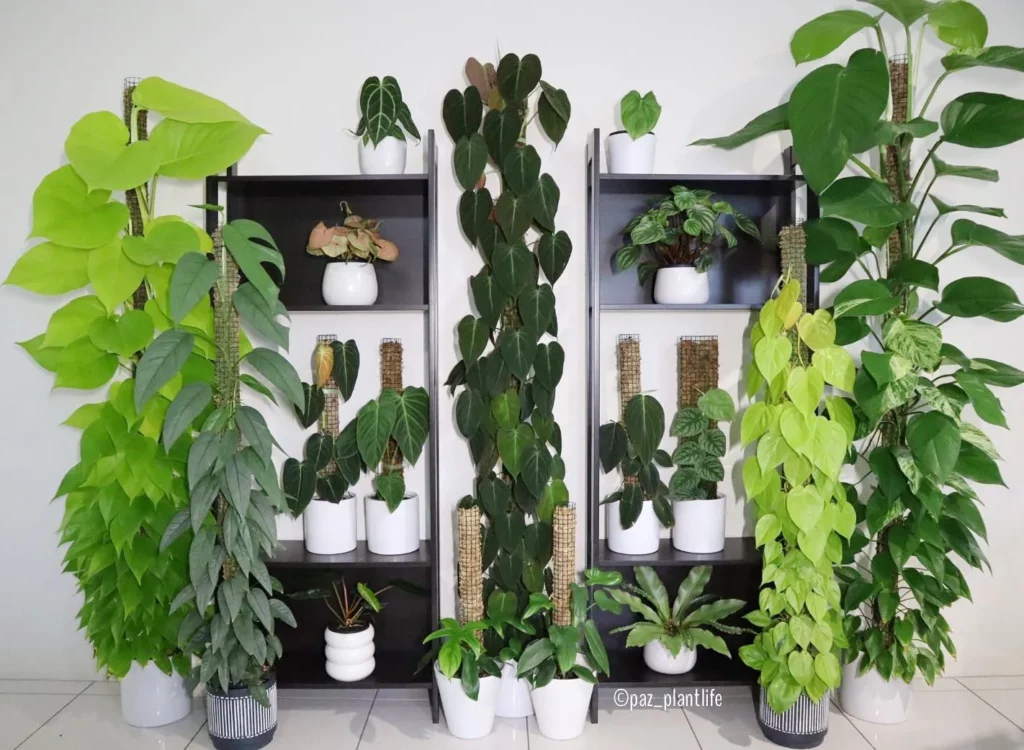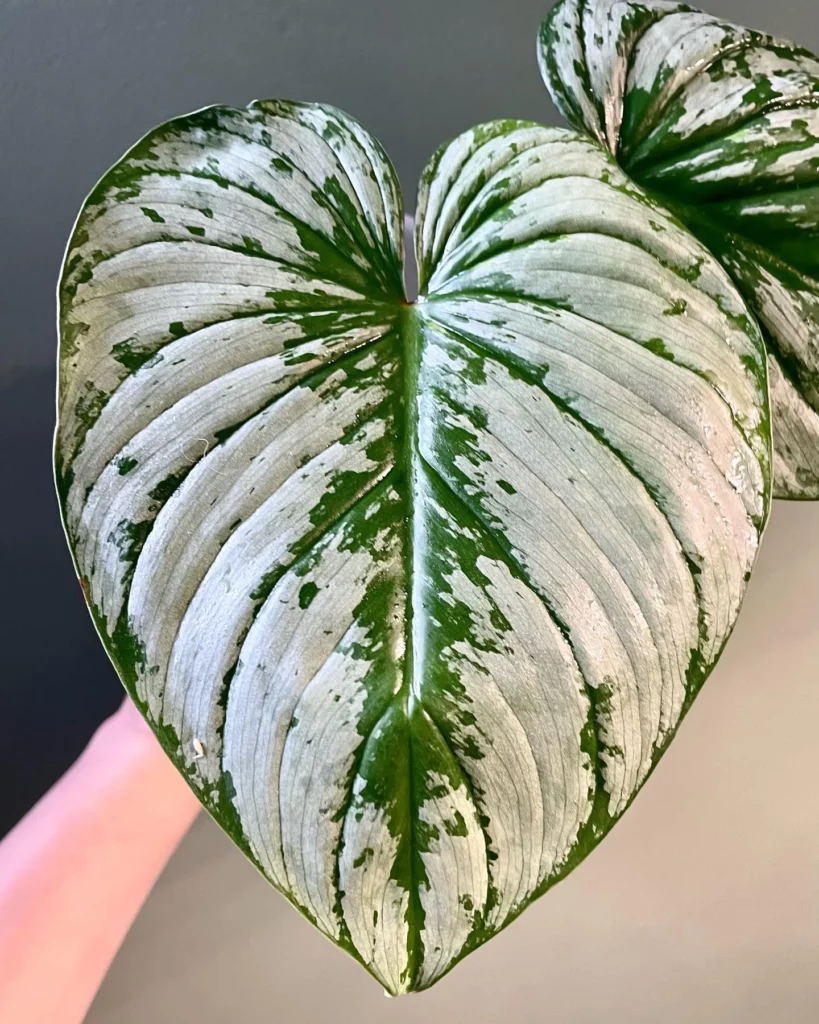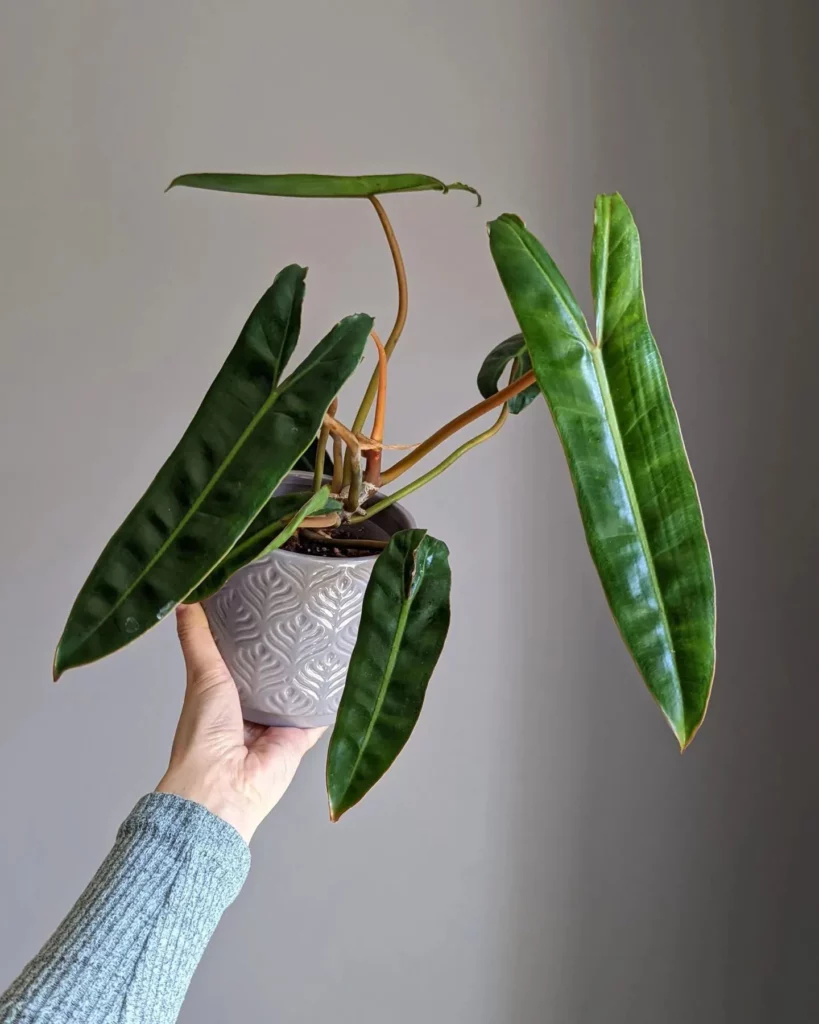Are you ready to explore the enchanting world of Philodendron Bipennifolium? This exotic and rare plant is a true gem, with its unique leaf shapes that resemble violins, butterflies, or even horse heads. Its glossy green leaves add a touch of elegance to any indoor plant collection or garden. But don’t let its rareness fool you – caring for Philodendron Bipennifolium is easier than you might think.
Key Takeaways:
- Philodendron Bipennifolium is an exotic and rare plant with unique leaf shapes.
- Its leathery, glossy green leaves make it a stunning addition to any indoor plant collection or garden.
- Caring for Philodendron Bipennifolium is relatively easy and requires basic TLC.
- It thrives in warm temperatures, prefers well-draining soil, and needs bright, indirect sunlight.
Philodendron Bipennifolium Plant Care Basics



Proper care is essential for the health and vitality of your Philodendron Bipennifolium. By following these simple guidelines, you can ensure that your plant thrives and flourishes in your home or garden.
Temperature and Light
Philodendron Bipennifolium prefers warm temperatures between 70 and 80 degrees Fahrenheit, with slightly cooler temperatures at night. It is important to keep the plant away from drafts or extreme temperature fluctuations. Place your Philodendron Bipennifolium in a location with bright, indirect sunlight. Too much direct sunlight can scorch the leaves, while insufficient light can result in leggy growth.
Soil and Watering
For optimal growth, Philodendron Bipennifolium requires well-draining soil that consists of clay, sand, and silt. A mixture of potting soil and perlite can also be used. It is crucial to water the plant when the top inch of soil feels dry. Overwatering can lead to root rot, so it is better to underwater than overwater. However, make sure not to let the plant completely dry out, as this can cause wilting and dehydration.
Fertilization and Propagation
Philodendron Bipennifolium only requires fertilization a few times a year. Use a slow-release fertilizer specifically formulated for houseplants. Follow the instructions on the fertilizer packaging for proper application. Propagation can be done through stem cutting or air layering. Stem cuttings should be taken from a healthy, mature plant and rooted in water or a well-draining rooting medium.
No products found.
Philodendron Bipennifolium Varieties and Similar Plants



Philodendron Bipennifolium, with its captivating leaf shapes and glossy green foliage, has several intriguing varieties. Let’s explore some of these unique variations and discover similar plants that can add diversity to your indoor plant collection.
Philodendron Bipennifolium Aurea
One of the remarkable varieties of Philodendron Bipennifolium is the Aurea. This variety features stunning yellow leaves that gradually fade to a vibrant green, creating a striking visual contrast. The Aurea variety is an excellent choice for adding a pop of color to your plant display.
Philodendron Pedatum
The Philodendron Pedatum is another captivating variety of Philodendron Bipennifolium. This variety is characterized by its smooth petioles and unique leaf shapes, reminiscent of a horse’s head or a violin. The Philodendron Pedatum adds a touch of elegance and sophistication to any indoor space.
Aside from the various Philodendron Bipennifolium varieties, there are other plants that share similar characteristics and are worth exploring:
- Philodendron Squamiferum: Known as the Red Bristle Philodendron, this plant features red hairs on its stems and leaves, offering a visually striking appeal.
- Philodendron Golden Dragon: The Golden Dragon variety showcases vibrant golden-yellow leaves, adding a touch of brightness and warmth to your plant collection.
- Philodendron Fiddle Lime: This variety has elongated, lime-green leaves that resemble fiddleheads, providing a unique and eye-catching feature to your indoor space.
Philodendron Bipennifolium Diseases & Pests



While Philodendron Bipennifolium is a relatively resilient plant, it can still be susceptible to certain diseases and pests. Understanding how to identify and treat these issues is crucial for maintaining the health and beauty of your plant.
Diseases:
- Root Rot: Overwatering can lead to root rot, causing the roots to become mushy and black. To prevent this, ensure proper drainage and avoid overwatering.
- Leaf Spot: Leaf spot is characterized by small, dark spots on the leaves. This can be caused by overwatering, high humidity, or poor air circulation. Remove infected leaves and adjust watering and humidity levels accordingly.
Pests:
- Aphids: Aphids are small, sap-sucking insects that can cause stunted growth and distorted leaves. Use Neem oil or insecticidal soap to treat the infestation.
- Brown Scales: Brown scales are small, oval-shaped insects that produce a sticky substance on the leaves. They can be treated with Neem oil or by manually removing them with a cotton swab dipped in rubbing alcohol.
Potting and Repotting Philodendron Bipennifolium



When it comes to potting your Philodendron Bipennifolium, there are a few things to keep in mind. First, choose a pot that is glazed ceramic or plastic, depending on your preference. The pot should be one to two inches larger in diameter than the root ball of the plant. This will give the roots enough room to grow without it being too overwhelming for the plant.
When repotting your Philodendron Bipennifolium, it’s best to do so every 2-3 years as the plant matures. This will allow for fresh soil and added nutrients, helping the plant to continue thriving. When repotting, gently remove the plant from its current pot, loosening the roots if necessary. Place it in the new pot, filling in with a well-draining soil mixture.
Temperature, Humidity, and Watering Requirements for Philodendron Bipennifolium



When it comes to creating the perfect environment for your Philodendron Bipennifolium to thrive, temperature, humidity, and watering are key factors to consider. Let’s dive into the specifics!
Temperature:
Philodendron Bipennifolium prefers temperatures between 70 and 80 degrees Fahrenheit, providing a warm and comfortable climate. It’s important to note that this plant is sensitive to freezing temperatures, so make sure to keep it away from drafts and cold areas to avoid any damage.
Humidity:
Adequate humidity is essential for the health of your Philodendron Bipennifolium. These tropical beauties love high humidity levels, which can be achieved through a few simple methods. Using a humidifier near your plant or placing a tray filled with water and pebbles nearby can help create a humid microclimate. Regular misting of the leaves can also provide a moisture boost and keep your plant happy.
Watering:
Proper watering is crucial for the overall well-being of your Philodendron Bipennifolium. It’s important to strike a balance between keeping the soil moist and avoiding overwatering. As a general rule, water your plant when the top inch of the soil feels dry to the touch. Ensure that excess water drains well to prevent root rot. Remember, it’s always better to underwater slightly than to overwater and risk the health of your plant.




